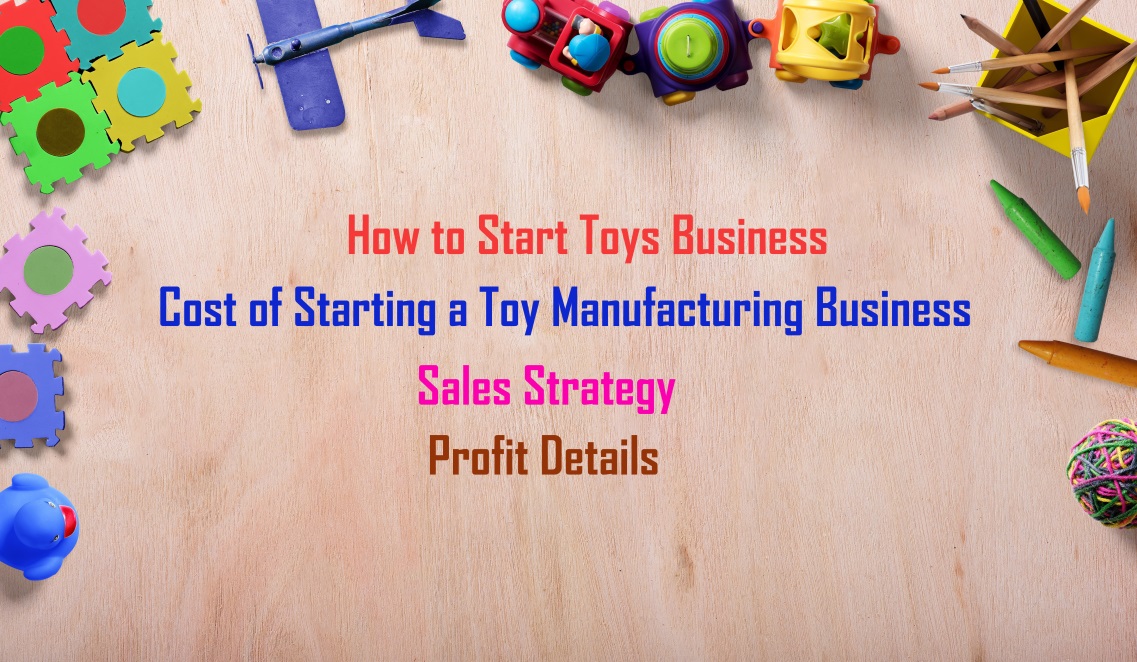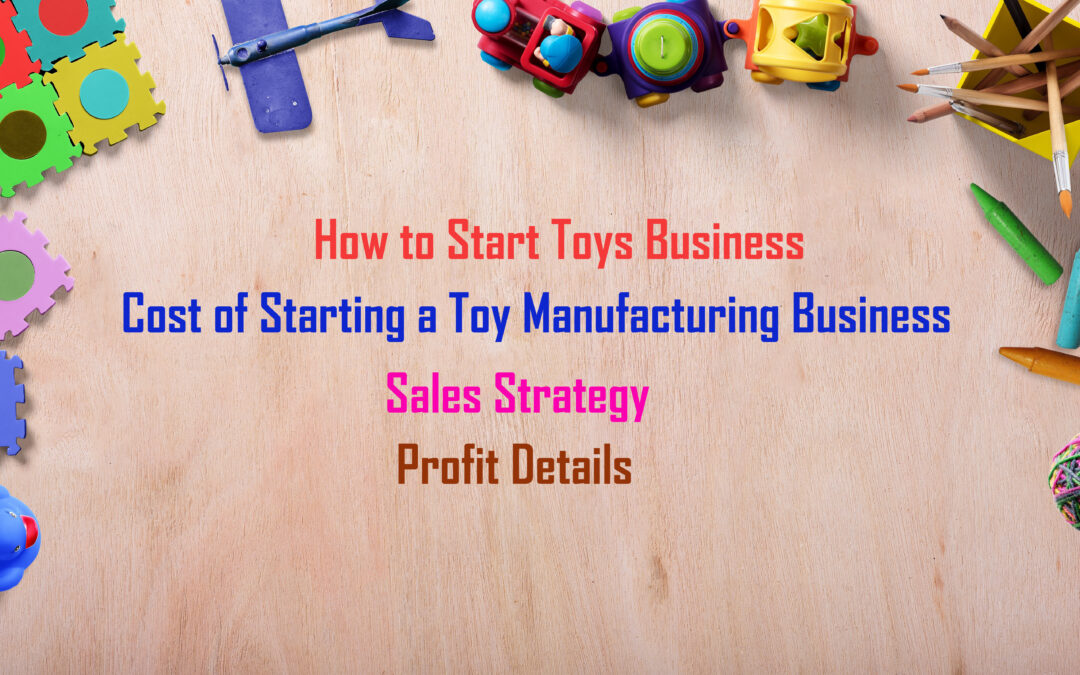Toys have been an integral part of childhood for centuries. From simple wooden blocks to high-tech interactive toys, the toy industry has evolved significantly over time. The global toy industry is currently valued at over $100 billion, with a projected growth rate of 4.4% per year. With such a high demand for toys, starting a toy manufacturing business is an excellent idea. This article will provide an overview of the toy manufacturing business and offer some tips on how to get started.
Market Research Before starting a toy manufacturing business, it’s important to conduct market research to identify the target market and their needs. The toy industry caters to a broad range of age groups, from infants to teenagers. Each age group has specific preferences and needs, and it’s essential to identify them to create a successful product. For example, toddlers prefer toys that are colorful and easy to grasp, while older children prefer toys that are challenging and educational.
 Follow Vijay Broadcast on WhatsApp
Follow Vijay Broadcast on WhatsApp
 Follow Vijay Broadcast on Instagram
Follow Vijay Broadcast on Instagram

Another critical aspect of market research is identifying the competition. The toy industry is highly competitive, with many established players dominating the market. It’s important to identify the strengths and weaknesses of the competition to develop a unique selling proposition that sets your toys apart from the rest.
Product Design Once the target market has been identified, the next step is to develop a product design. A good product design should be both aesthetically appealing and functional. It’s essential to consider factors such as safety, durability, and ease of use when designing a toy. The design should also be innovative and unique to stand out in a crowded market. Product design can be done in-house or outsourced to a design firm. It’s important to work with experienced designers who can create a high-quality product design that meets the needs of the target market. The product design should also be cost-effective to produce in large quantities.
Manufacturing Process The manufacturing process is another crucial aspect of starting a toy manufacturing business. The manufacturing process should be efficient and cost-effective while maintaining a high level of quality. The manufacturing process can be done in-house or outsourced to a third-party manufacturer.
If you plan to manufacture the toys in-house, you will need to invest in equipment and hire skilled labor. The equipment needed will depend on the type of toy being produced. For example, plastic injection molding machines are required to produce plastic toys, while woodworking equipment is needed to produce wooden toys. It’s essential to invest in high-quality equipment to ensure the production of high-quality toys.
Outsourcing the manufacturing process to a third-party manufacturer can be a more cost-effective option. However, it’s important to work with a reliable and experienced manufacturer who can produce high-quality toys. It’s also essential to ensure that the manufacturer complies with safety standards and regulations.
Marketing and Sales Marketing and sales are crucial for the success of a toy manufacturing business. A well-executed marketing and sales strategy can help generate brand awareness and drive sales. There are several marketing and sales channels that can be used to promote toys, including:
-
- Online marketplaces: Online marketplaces such as Amazon are popular channels for selling toys. These platforms offer a large audience and provide an easy way to sell products.
- Social media: Social media platforms such as Facebook, Instagram, and Twitter can be used to promote toys and engage with customers. Social media is an excellent way to generate buzz and build a community around your brand.
- Trade shows: Trade shows are an excellent way to showcase your toys and network with potential customers and partners. Trade shows provide an opportunity to get feedback on your products and generate leads.
- Retail stores: Retail stores are a popular channel for selling toys. It’s essential to work with retailers who cater to the target market and are a good fit for your brand.
Funding Starting a toy manufacturing business requires significant investment, and funding options will depend on the scale of the business. Small-scale operations may require a few thousand dollars, while larger-scale operations may require hundreds of thousands or even millions of dollars.
One option for funding is to seek out investors who are interested in the toy industry. Investors can provide capital in exchange for a stake in the business. It’s important to create a solid business plan and pitch to attract investors.
Another option for funding is to apply for a business loan. Business loans can provide the necessary capital to start a toy manufacturing business. However, it’s important to have a good credit score and a solid business plan to qualify for a loan.
Cost of Starting a Toy Manufacturing Business
Equipment: The cost of equipment can range from a few thousand dollars for small-scale operations to hundreds of thousands of dollars for larger-scale operations. The type of equipment needed will depend on the type of toys being produced.
- Materials: The cost of materials will depend on the type of toys being produced. For example, the cost of plastic pellets for injection molding can vary widely depending on the quality and quantity purchased.
- Labor: The cost of labor will depend on the scale of the business and the type of toys being produced. For small-scale operations, the owner may handle most of the labor, while larger-scale operations may require hiring a team of employees.
- Rent/Lease: If the business is operating out of a physical location, the cost of rent or lease will need to be factored into the overall cost of starting the business.
- Marketing and Sales: The cost of marketing and sales will depend on the marketing strategy used. For example, online marketing may be less expensive than attending trade shows or advertising in print media.
- Legal and Insurance: The cost of legal and insurance fees will need to be factored into the overall cost of starting the business to ensure compliance with safety standards and regulations.
Sales Strategy
-
-
- Sell Directly to Consumers: Direct-to-consumer (DTC) sales are a popular option for toy manufacturers, especially those who specialize in niche products. DTC sales allow you to establish a relationship with your customers and build brand awareness. You can sell your toys through your own online store or marketplaces like Amazon, or eBay.
- Wholesale: Selling wholesale to retailers is another way to sell your toys. This strategy involves selling your products at a discounted price to retailers who then sell them at a higher price to consumers. To succeed in this strategy, you need to develop strong relationships with retailers, understand their needs, and offer competitive pricing.
- Attend Trade Shows: Attending industry trade shows is an excellent way to showcase your toys and connect with potential customers and partners. Trade shows offer the opportunity to meet with retailers, distributors, and other industry professionals, which can help you expand your network and grow your business.
- Partner with Influencers: Partnering with influencers, bloggers, or YouTubers who cater to your target audience is an effective way to reach new customers. These influencers can create product reviews, unboxing videos, and other content that promotes your toys to their followers.
-
- Licensing: Licensing your toy designs to other companies can be a lucrative sales strategy. By licensing your designs, you can generate revenue from royalties without having to handle the manufacturing, distribution, or marketing aspects of the business.
- Custom Orders: Offering customized toys or creating toys based on customer feedback or requests can be an effective sales strategy. By creating unique and personalized toys, you can differentiate yourself from competitors and build a loyal customer base.
Conclusion
Starting a toy manufacturing business can be a rewarding and profitable venture. However, it’s essential to conduct thorough market research, develop a high-quality product design, establish an efficient manufacturing process, and implement a well-executed marketing and sales strategy. With the right approach and a bit of luck, a toy manufacturing business can become a successful and enduring enterprise.
Packers & Movers Business IdeaTop 5 Best Profitable Business.
Top 15 Manufacturing Business
 Follow Vijay Broadcast on WhatsApp
Follow Vijay Broadcast on WhatsApp
 Follow Vijay Broadcast on Instagram
Follow Vijay Broadcast on Instagram

